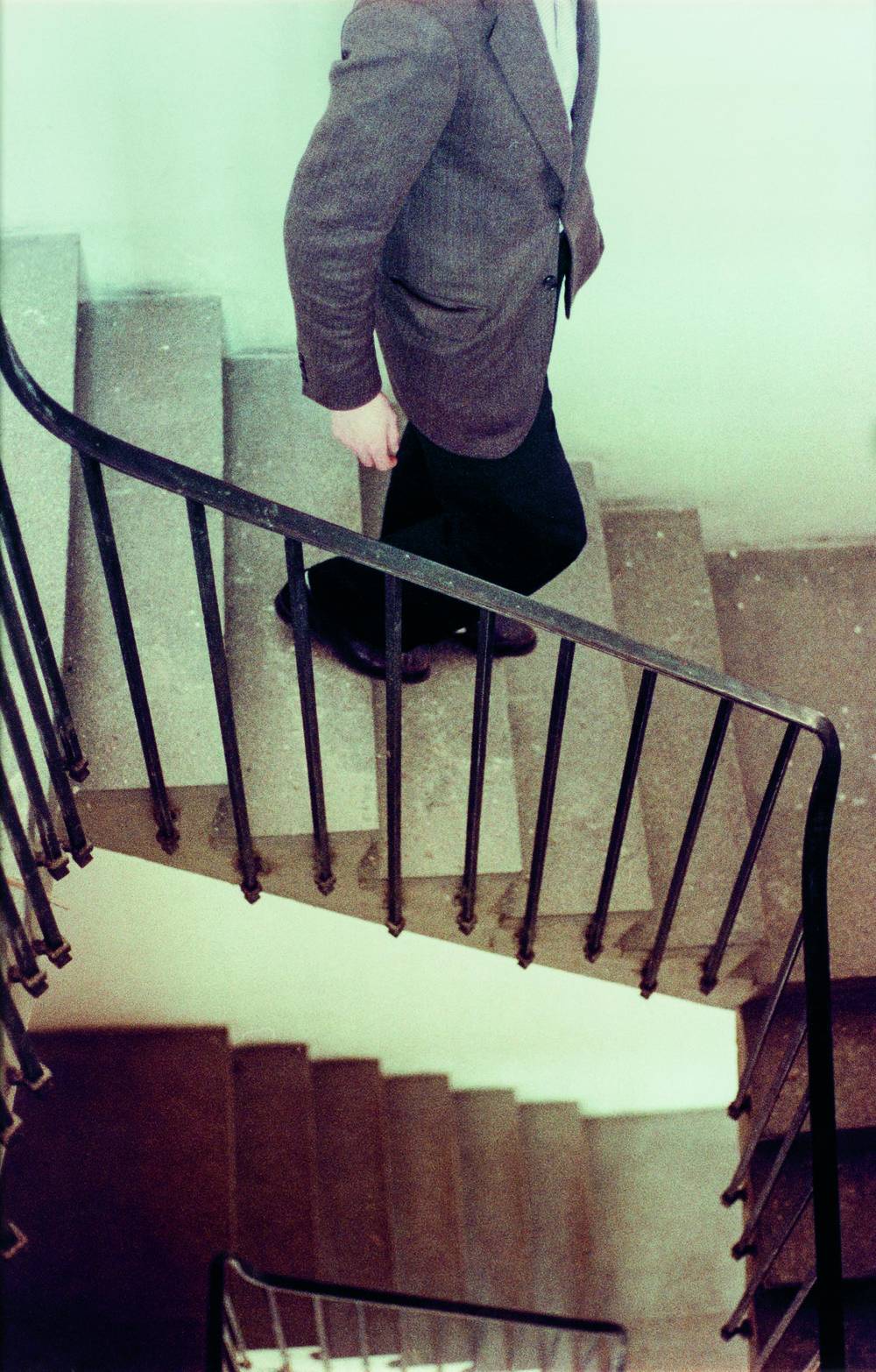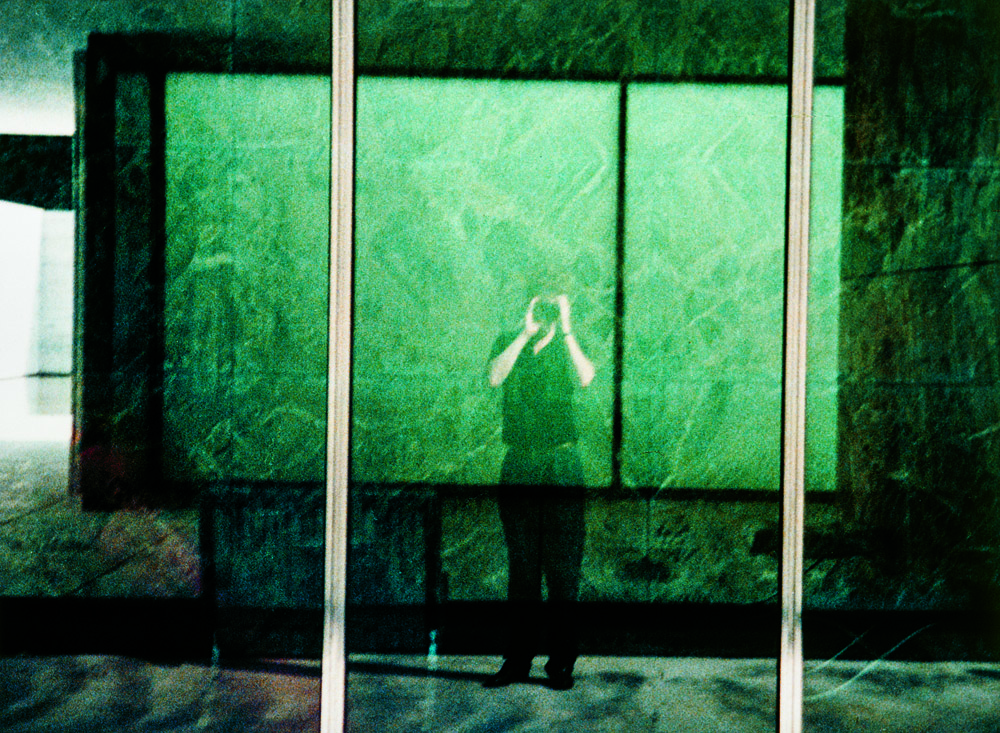Artist Günther Förg eluded being pigeonholed; he worked as a painter, sculptor, photographer and draftsman – always outside the box.
No artistic trademark, no easily recognizable signature: Artists repeatedly attempt to re-invent themselves so as to free themselves from attributions and expectations. Gerhard Richter is arguably the best-known representative of this strategy. But the oeuvre of artist Günther Förg (1952-2013) can also be considered under the aspect of evasion. It encompasses painting and photography, sculpture and drawing, murals and works in public space.
In 2008 Förg presented paintings that appear lighthearted and carefree. The large-format canvases from this period depict arrangements and accumulations of brushwork, gestures that are both graphic, emphasizing the stroke, and that demonstrate a quality that is genuinely painterly and focuses on the impact of color. The canvases positively vibrate; the observer is offered an orchestra of forms. Their striking spontaneity is amazing.
A love of the unfinished
Förg’s earlier works often appear detached and objective. They are mainly abstract and reduced to a few color fields. Barnett Newman and Blinky Palermo are often cited as references. And indeed during his studies at the Munich Academy of Fine Arts it was Beuys’ student Palermo that Förg particularly explored. From the 1990s onwards Günther Förg developed a more relaxed style in his painting. Many of his works are defined by grid and raster structures. In an interview in 1997 Förg admitted he favored the unfinished, and speed as a method.

Günther Förg, Mural Painting Antwerpen, Exhibition Gallery Micheline Szwajcer Antwerpen, 1985. Photo: Günther Förg, Image via hamburg.de
Figurative references are evident in Förg’s sculptures. Initially, in the 1980s, the artist produced reliefs, which are still close to the drawn image. Later he added parts of the body, such as (mask-like) faces, hands and feet. As a sculptor Günther Förg usually worked with cast bronze. The attraction of this medium, which was still new for Förg, was in its imperfect quality.
Between the epochs
It was also in the 1980s, during a trip to Italy, that Förg discovered his interest in architectural photography. This interest was sparked by the architecture known as “Rationalismo”, a neo-functional and modern current in the fascist-ruled Italy of the 1920s and 1930s. What especially fascinated the artist were the clear forms of the buildings, which enabled him to find a transition to his painting. He often presented the photographs – some of them taken hastily – with his murals. In subsequent years he produced additional series of (mostly black-and-white) architecture images.

Günther Förg, Mask, Maske, Bronze, 1990, Photo: Wolfgang Günzel © Estate of Günther Förg Courtesy Private Collection, Image via art-in-duesseldorf.de
In 1995 Förg spent two weeks in Moscow, where he photographed buildings of the Soviet architectural avant-garde from the 1920s and 1930s. The radically modern buildings were often left in a state of decay. In 1996 Förg photographed the former IG-Farben building in Frankfurt, which was completed 1931 after a design by Hans Poelzig. From 1952 to 1995 the monumental complex served as the U.S. Army’s main European quarters. In 2001 it became the main campus of Goethe University Frankfurt. Förg’s photographs show the building, which is today synonymous with students and study, standing empty between the epochs.
A ghostly photographer
Two photographs from the artist’s architecture series can be seen in the exhibition “ME” at the Schirn: Förg’s image “Treppenhaus München” (Staircase Munich) from 1984 shows a man striding down the stairs, his face outside the image. The surroundings appear cool and anonymous; his jacket corresponds with the gray color of the steps.

For the second image Förg photographed his reflection in the pane of the famous Barcelona Pavilion by Mies van der Rohe. The building was realized 1929 as Germany’s contribution to the International Exposition and was demolished afterwards. However, in 1986 it was reconstructed, and Förg traveled to see it that same year. The artist’s face is hidden by the camera. The image is blurred, the photographer appears ghostly. He does not want to be recognized. After all, faces always allow classification and identification. Something that artist Günther Förg tried hard to avoid all his life.


How Hip Hop sings about its dead
Death plays a large part in Hip Hop. The tragic early passing of legends such as Biggie Smalls and Tupac, not to mention rising superstars like...

5 questions for Mary Messhausen and proddy produzentin
With the performance "Thonk piece: Hungry for Stains", drag queens Mary Messhausen and proddy produzentin will open the exhibition COSIMA VON BONIN....

HIP HOP IS BLACK CULTURE – NOT THE OTHER WAY AROUND
Hip hop’s 50th birthday is an occasion for us to listen to some old records and mixed tapes and to look back at the most important hip hop films of...

Now at the SCHIRN:COSIMA VON BONIN
The SCHIRN is showing a unique presentation of new and well-known works by COSIMA VON BONIN until June 9.

SHALLOW LAKES – plumbing the depths
In the SCHIRN’s rotunda, MELIKE KARA is presenting a series of sculptures that are reminiscent of bodies of water or small lakes. So, what’s this...

When subculture becomes mainstream – a balancing act
Regardless of whether it is hip hop, techno, or the queer scene: It is not unusual for the aesthetics of countercultures and subcultures to morph into...